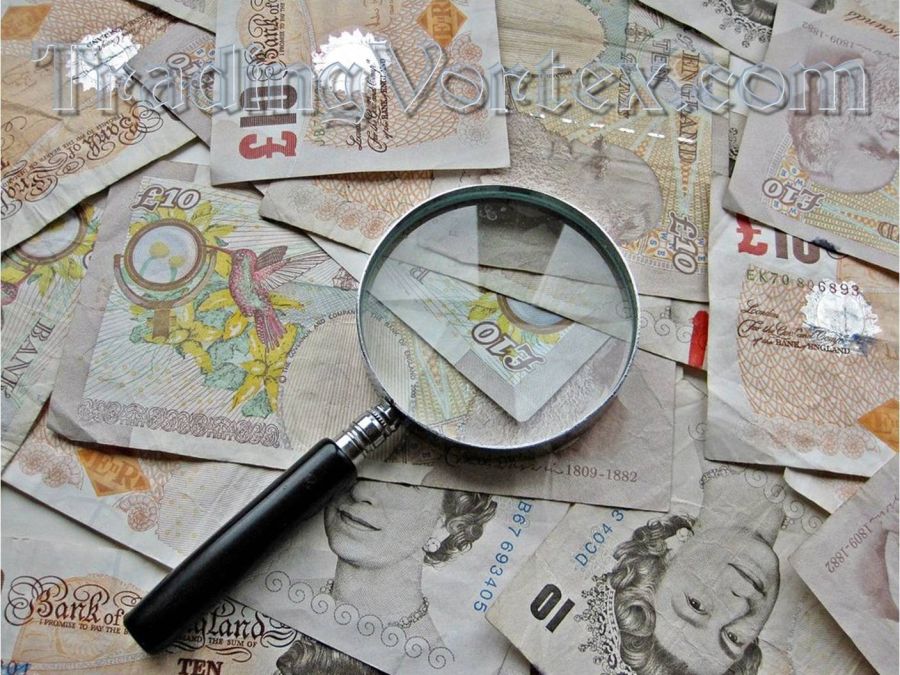Table Of Contents:
- Introduction to Currency Characteristics:
- Fundamental Characteristics of Currencies:
- Economic Factors Influencing Currency Characteristics:
- Technical Factors Affecting Currency Characteristics:
- Major Currency Characteristics Explored:
- How to Analyze and Interpret Currency Characteristics:
- Strategies for Utilizing Currency Characteristics in Trading:
- Conclusion – Mastering Currency Characteristics for Successful Trading:
Introduction to Currency Characteristics:
Welcome, fellow traders and investors, to the captivating world of currency trading! As we embark on this journey together, it's crucial to grasp the fundamental essence of what drives the currency markets – the characteristics that make each currency unique.
Understanding Currency Traits – An Overview:
Picture this: you're standing in a bustling marketplace, surrounded by traders from all walks of life, each with their own currency to offer. Just like in that market, currencies have their distinct personalities – some are steady and reliable, while others are prone to wild swings and surprises.
These unique traits, known as currency characteristics, encompass a variety of factors such as liquidity, volatility, accessibility, and stability. Think of them as the DNA of each currency, shaping how it behaves in the vast ocean of the global forex market.
Why Currency Characteristics Matter in Trading:
Now, you might be wondering, why should I bother understanding these currency quirks? Well, my friends, let me tell you – mastering currency characteristics is akin to wielding a powerful tool in your trading arsenal.
Imagine trying to navigate a stormy sea without a compass. Understanding currency traits is your compass in the tumultuous waters of the forex market, guiding you towards profitable opportunities and helping you steer clear of potential pitfalls.
Whether you're a seasoned trader or just dipping your toes into the world of currency trading, grasping these characteristics will set you on the path to success. So buckle up and get ready to delve deep into the fascinating realm of currency traits – it's going to be an exhilarating ride!
Fundamental Characteristics of Currencies:
Alright, let's dive into the nitty-gritty of currency characteristics – the bread and butter of every savvy trader's playbook. Think of these fundamental traits as the building blocks that shape the ebb and flow of the forex market.
Exploring Key Traits – Liquidity, Volatility, and More:
- First up on our journey through the world of currency traits is liquidity – the lifeblood of any market. Liquidity refers to how easily a currency can be bought or sold without causing significant price changes. Picture it like a busy highway, where trades flow smoothly without causing gridlock. Major currencies like the US dollar (USD) and euro (EUR) are like the Autobahn of the forex world – highly liquid and bustling with activity.
- Next, we have volatility – the wild child of the currency markets. Volatility measures the degree of price fluctuation over time, and let me tell you, it can make your heart race faster than a Formula 1 race. While some traders thrive on volatility, others prefer the calm waters of stability. Understanding the volatility of different currencies is key to managing risk and seizing profitable opportunities.
- But wait, there's more! Accessibility is another crucial currency characteristic to consider. Accessibility refers to how easily traders can access and trade a particular currency. Major currencies like the USD and EUR are readily available for trading, while exotic currencies may require more effort to access. Keep accessibility in mind when crafting your trading strategy – after all, you don't want to be left stranded on the sidelines.
- Last but not least, stability rounds out our list of fundamental currency characteristics. Stability measures how resistant a currency is to sudden and dramatic price movements. Currencies issued by economically stable countries tend to be more stable, providing a safe haven for investors during turbulent times.
Assessing Currency Fundamentals – A Deep Dive:
Now that we've scratched the surface of currency fundamentals, it's time to roll up our sleeves and dive deeper. Assessing currency fundamentals requires a keen eye for detail and a knack for deciphering market dynamics.
From analyzing economic indicators to monitoring geopolitical events, there's no shortage of factors influencing currency fundamentals. But fear not, dear reader, for armed with the knowledge of these fundamental characteristics, you'll be well-equipped to navigate the ever-changing currents of the forex market with confidence and finesse.
Economic Factors Influencing Currency Characteristics:
Ah, economics – the beating heart of the forex market. If you've ever wondered what makes currencies tick, look no further than the powerful influence of economic factors. Get ready to embark on a journey through the maze of economic variables that shape currency traits.
Impact of Economic Variables on Currency Traits:
Picture this: you wake up to the sound of your alarm clock, groggily reaching for your phone to check the latest economic news. Why? Because economic variables like interest rates, inflation rates, and GDP growth can send shockwaves through the currency markets faster than a double shot of espresso.
- Let's start with interest rates – the golden nugget of central bank policy. A hike in interest rates can boost a currency's value by attracting foreign investors seeking higher returns. Conversely, a cut in interest rates can send a currency tumbling as investors flee in search of greener pastures.
- Next up, we have inflation rates – the silent assassin of purchasing power. High inflation erodes the value of a currency, making it less attractive to investors. Keep an eye on inflation data like a hawk, because a whiff of inflationary pressure can send shockwaves through the forex market faster than you can say "quantitative easing."
- And let's not forget about GDP growth – the ultimate barometer of economic health. A robust GDP growth rate can bolster confidence in a currency, while sluggish growth can send it spiraling downwards faster than a rollercoaster ride.
Economic Drivers of Currency Behavior:
Now that we've covered the basics, let's talk about the economic drivers behind currency behavior. From monetary policy decisions to geopolitical events, there's no shortage of factors influencing currency movements.
- Central bank meetings are like high-stakes poker games, with traders hanging on every word for clues about future policy direction. A hawkish statement from the Federal Reserve can send the USD soaring, while a dovish tone can send it plummeting faster than a lead balloon.
- Geopolitical events are another key driver of currency behavior. From trade wars to geopolitical tensions, political developments can send shockwaves through the currency markets faster than you can say "Brexit."
So, dear reader, as you navigate the treacherous waters of the forex market, remember the golden rule – keep a close eye on economic variables, for they hold the key to unlocking the mysteries of currency traits.
Technical Factors Affecting Currency Characteristics:
Welcome to the realm of technical analysis – where charts, indicators, and patterns reign supreme. Strap in, fellow traders, as we explore the fascinating world of technical factors that influence currency characteristics.
Technical Aspects Shaping Currency Traits:
Forget crystal balls and tea leaves – when it comes to predicting currency movements, technical analysis is your best friend. Technical factors encompass a wide array of tools and techniques, each offering unique insights into currency dynamics.
- Let's start with exchange rates – the lifeblood of the forex market. Exchange rates reflect the relative value of one currency against another, and studying their patterns can provide valuable clues about future price movements. Whether you're a fan of candlestick charts or line graphs, analyzing exchange rate trends is essential for understanding currency behavior.
- Trading volume is another critical technical factor to consider. Think of trading volume as the pulse of the market – it measures the number of transactions occurring within a given period. High trading volume indicates strong market participation, while low volume suggests a lack of interest. Keep a close eye on trading volume to gauge market sentiment and anticipate potential trend reversals.
- Market sentiment is like the collective mood of traders – it can shift faster than the weather in April. Whether it's fear, greed, or sheer exuberance driving the market, understanding market sentiment is key to staying ahead of the curve. Keep tabs on sentiment indicators like the COT (Commitments of Traders) report and investor sentiment surveys to gauge market sentiment and identify potential trading opportunities.
- Price patterns are the bread and butter of technical analysis – they provide valuable insights into market psychology and behavior. Whether it's a double top, head and shoulders, or bullish engulfing pattern, recognizing and interpreting price patterns is essential for making informed trading decisions.
Analyzing Currency Dynamics – Technical Insights:
Now that we've covered the basics, let's dive deeper into analyzing currency dynamics using technical insights. From moving averages to oscillators, there's no shortage of tools at your disposal.
- Moving averages smooth out price data to identify trends and reversals, making them invaluable tools for trend traders. Whether you prefer simple moving averages or exponential moving averages, incorporating moving averages into your trading strategy can help you spot potential entry and exit points with ease.
- Oscillators like the RSI (Relative Strength Index) and Stochastic oscillator measure the speed and magnitude of price movements, helping traders identify overbought and oversold conditions. Keep a close eye on oscillators to pinpoint potential trend reversals and fine-tune your trading strategy accordingly.
So there you have it, folks – a crash course in the technical factors that influence currency characteristics. Whether you're a seasoned trader or just starting out, mastering technical analysis is essential for navigating the ever-changing currents of the forex market with confidence and finesse.
Major Currency Characteristics Explored:
Alright, let's delve deeper into the fascinating world of major currencies. From the mighty US dollar to the steadfast euro, these currencies shape the global forex market in profound ways. So grab your favorite beverage and let's explore the unique characteristics of each major currency.
US Dollar (USD) – The Powerhouse Player:
First up, we have the US dollar – the undisputed king of the forex market. With its unmatched liquidity and status as the world's primary reserve currency, the USD is a force to be reckoned with. Whether you're trading the EUR/USD, USD/JPY, or USD/CAD, you can count on the USD to deliver excitement and opportunity.
Euro (EUR) – The Eurozone Star:
Next, let's turn our attention to the euro – the currency of the European Union. Known for its stability and widespread use across the eurozone, the EUR is a favorite among traders seeking exposure to European markets. Whether you're trading the EUR/USD, EUR/GBP, or EUR/JPY, the EUR offers plenty of action and potential.
Japanese Yen (JPY) – The Quiet Contender:
Now, let's talk about the Japanese yen – a currency with a quiet strength. Renowned for its low-interest rates and safe-haven status, the JPY is a favorite among traders seeking stability. Whether you're trading the USD/JPY, EUR/JPY, or GBP/JPY, the JPY provides a steady hand in turbulent times.
British Pound (GBP) – The Sterling Surprise:
Ah, the British pound – a currency full of surprises. With its penchant for volatility and historical significance, the GBP keeps traders on their toes. Whether you're trading the GBP/USD, GBP/EUR, or GBP/JPY, expect the unexpected with the GBP.
Australian Dollar (AUD) – The Aussie Adventure:
Moving on to the Australian dollar – a currency tied to the land Down Under. Known for its close ties to commodity prices and the Chinese economy, the AUD offers a thrilling ride for traders. Whether you're trading the AUD/USD, AUD/JPY, or AUD/NZD, get ready for an Aussie adventure.
Canadian Dollar (CAD): The Loonie Legend:
Last but not least, let's not forget about the Canadian dollar – affectionately known as the loonie. With its strong ties to commodity prices, particularly oil, the CAD offers plenty of trading opportunities. Whether you're trading the USD/CAD, CAD/JPY, or CAD/CHF, the CAD is a legend in its own right.
Swiss Franc (CHF) – The Swiss Sensation:
And finally, we have the Swiss Franc – a currency synonymous with stability and security. The CHF is a favorite among risk-averse investors, offering a safe haven during times of uncertainty. Whether you're trading the USD/CHF, EUR/CHF, or GBP/CHF, the CHF is a sensation in the forex world.
So there you have it, folks – a closer look at the major currencies that dominate the forex market. Whether you're a seasoned trader or just starting out, understanding the characteristics of these major currencies is essential for navigating the ever-changing currents of the forex market with confidence and finesse.
How to Analyze and Interpret Currency Characteristics:
Alright, folks, now that we've covered the ins and outs of currency characteristics, it's time to roll up our sleeves and get down to business. Analyzing and interpreting currency traits is the bread and butter of successful trading, so let's dive right in and uncover the secrets to trading success.
Effective Methods for Currency Trait Analysis:
When it comes to analyzing currency characteristics, there's no one-size-fits-all approach. Every trader has their own unique style and preferences, so it's essential to find the methods that work best for you. Whether you're a fan of fundamental analysis, technical analysis, or a combination of both, there are plenty of tools and techniques at your disposal.
- Fundamental analysis involves examining economic indicators, central bank policies, and geopolitical events to assess the underlying strength of a currency. Keep a close eye on interest rates, inflation rates, and GDP growth – these economic variables can provide valuable insights into currency behavior.
- On the other hand, technical analysis focuses on chart patterns, indicators, and price action to identify trading opportunities. Whether you're a fan of moving averages, RSI, or MACD, incorporating technical analysis into your trading strategy can help you spot trends and reversals with ease.
But here's the thing, folks – there's no magic bullet when it comes to analyzing currency traits. It's all about finding the methods that resonate with you and using them to gain a deeper understanding of the forex market.
Interpreting Currency Traits for Trading Success:
Alright, so you've analyzed the currency traits – now what? Well, my friends, it's time to put that analysis into action and make some trading decisions. But here's the kicker – interpreting currency traits is as much art as it is science. It's about understanding the nuances of the market and having the confidence to act on your convictions.
When interpreting currency traits, it's essential to consider the broader market context. Is the market bullish or bearish? Are there any major economic events on the horizon? By keeping tabs on the market sentiment and staying informed about upcoming events, you can make more informed trading decisions.
But here's the thing, folks – trading is not just about analyzing currency traits; it's also about managing risk. Whether you're using stop-loss orders, position sizing, or diversification, it's essential to have a solid risk management strategy in place to protect your capital.
So there you have it, folks – a crash course in analyzing and interpreting currency characteristics. Whether you're a seasoned trader or just starting out, mastering these skills is essential for navigating the ever-changing currents of the forex market with confidence and finesse.
Strategies for Utilizing Currency Characteristics in Trading:
Alright, traders, it's time to put theory into practice and dive into the exciting world of trading strategies. Armed with our newfound knowledge of currency characteristics, let's explore how we can leverage these traits to our advantage and craft winning trading strategies.
Leveraging Currency Traits for Trading Strategies:
When it comes to crafting trading strategies, understanding currency characteristics is key. By leveraging the unique traits of each currency, we can identify potential opportunities and mitigate risks more effectively.
- One popular strategy is trend trading, where traders capitalize on the momentum of currency pairs. By analyzing currency traits such as liquidity and volatility, we can identify trending markets and ride the wave for potential profits. Whether you're trading the trend or looking for countertrend opportunities, understanding currency characteristics can give you an edge in the market.
- Another strategy is range trading, where traders capitalize on periods of consolidation in the market. By analyzing currency traits such as stability and accessibility, we can identify potential trading ranges and capitalize on price movements within those ranges. Whether you're trading breakouts or mean reversions, understanding currency characteristics can help you identify profitable trading opportunities.
Practical Approaches to Trading Based on Currency Traits:
Now that we've covered the theory, let's talk about some practical approaches to trading based on currency traits. Whether you're a seasoned trader or just starting out, these strategies can help you navigate the forex market with confidence and finesse.
- One approach is to focus on trading the major currency pairs, such as the EUR/USD, USD/JPY, and GBP/USD. These pairs offer ample liquidity and volatility, making them ideal for traders of all skill levels. By focusing on the major pairs, we can leverage the liquidity and stability of these currencies to our advantage.
- Another approach is to diversify your currency exposure by trading a basket of currencies. By spreading your risk across multiple currencies, you can reduce the impact of any single currency's movements on your overall portfolio. Whether you're trading a mix of major and exotic currencies or focusing on a specific region, diversification is key to long-term success in the forex market.
So there you have it, folks – a closer look at strategies for utilizing currency characteristics in trading. Whether you're a seasoned trader or just starting out, understanding and leveraging currency traits is essential for navigating the ever-changing currents of the forex market with confidence and finesse.
Conclusion – Mastering Currency Characteristics for Successful Trading:
Well, folks, we've reached the end of our journey through the captivating world of currency characteristics. From liquidity and volatility to economic drivers and technical factors, we've covered it all – and then some. So, let's take a moment to reflect on what we've learned and how it can help us become better traders.
Embracing the Complexity of Currency Traits:
Trading currencies is like navigating a maze – it's complex, ever-changing, and sometimes downright bewildering. But by understanding the key characteristics of currencies, we can unlock the secrets of the forex market and chart a course to success.
The Power of Knowledge and Preparation:
As traders, knowledge is our greatest asset. By arming ourselves with a deep understanding of currency traits, we can anticipate market movements, identify trading opportunities, and manage risk more effectively. But knowledge alone is not enough – preparation is key. By staying informed about economic events, market sentiment, and technical indicators, we can position ourselves for success in the fast-paced world of forex trading.
Adapting and Evolving in a Dynamic Market:
The forex market is like a living, breathing organism – it's constantly evolving and adapting to new information and events. As traders, we must be nimble and flexible, able to adjust our strategies and tactics to changing market conditions. By staying attuned to currency traits and market dynamics, we can adapt and thrive in even the most challenging environments.
The Journey Continues:
But remember, folks, mastering currency characteristics is a journey, not a destination. It requires dedication, perseverance, and a willingness to learn from both successes and failures. So whether you're a seasoned trader or just starting out, I encourage you to keep exploring, keep learning, and keep striving for excellence in your trading endeavors.
Final Thoughts:
As we bid farewell to this ultimate guide on currency characteristics, I want to leave you with one final thought – trading is not just about making money, it's about the journey. It's about the thrill of discovery, the satisfaction of overcoming challenges, and the camaraderie of fellow traders. So embrace the journey, my friends, and may your trading adventures be filled with success, prosperity, and joy.
Until next time, happy trading! 🍀


















 TradingVortex.com® 2019 © All Rights Reserved.
TradingVortex.com® 2019 © All Rights Reserved.